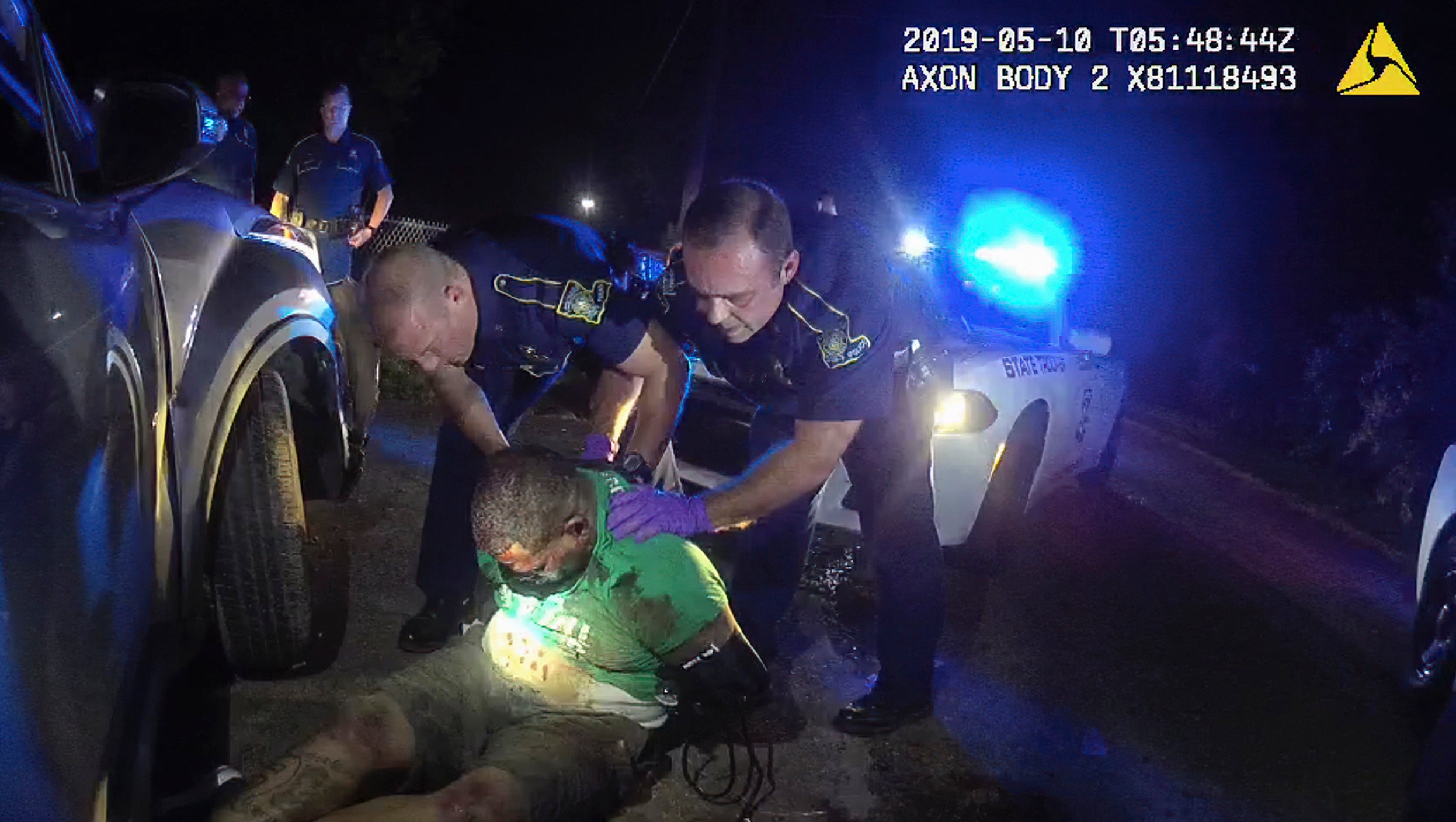Five Louisiana officers charged in connection to the death of Ronald Greene had their charges reconsidered by a judge. According to CNN, two of the officers had some of their charges quashed and now the judge is ordering that more charges be reviewed by the prosecution.
This is the latest (and slightly disappointing) update in Ronald Greene’s case since the appointment of the controversial, cop-loving prosecuting attorney, Hugo Holland. Third Judicial District Court Judge Thomas W. Rogers ruled on the criminal charges against the five officers accused of brutally beating Greene to death during a 2019 traffic stop. The document has a lot of fancy legal language so let’s go officer-by-officer on what this update means.
Suggested Reading
Peters will no longer face obstruction of justice charges after Judge Rogers found the two statements he made during the course of the investigation did not meet the charge’s criteria. Peters is accused of telling investigators to “bury it in the report” and not to send videos “unless the DA asks for it.” Presumably, “it” means the assault.
“‘Bury it in the report’ presumably is an admonition not to destroy, alter or remove inculpating evidence from a report, but to place it in the middle or towards the end of the report where a reader might overlook it,” ruled the judge.
Mmm… not sure about that one chief. Reports say the officers initially left out the beating altogether when informing the family and claimed Greene died from the impact of his vehicle crashing. That’s just one speculation about the incident being a coverup.
DeMoss also got a count of obstruction of justice dropped because the judge ruled that turning off his body camera audio during the incident did not constitute obstruction, or as Louisiana law puts it, tampering with evidence with the specific intent of distorting the results of any criminal investigation.
York was indicted on negligent homicide and 10 counts of malfeasance in office or official misconduct. However, of those 10 counts, eight of them could be quashed if the prosecutors follow the direction of Judge Rogers in “adequately identifying each criminal transaction.” In other words, the prosecutors have to find eight points in the video where York demonstrated official misconduct.
A ninth count of malfeasance could also be wiped out unless the prosecution can fix these “deficiencies” raised by the court.
Clary was indicted on one count of malfeasance in office and one count of obstruction of justice. He could have his malfeasance count wiped from the indictment if, again, prosecutors cannot point to an exact moment in the video footage where Clary committed an unlawful act against his policing duties.
Harpin was handed three counts of obstruction of justice and three counts of malfeasance in office. Though, two of those malfeasance charges could be dropped based on the “lack of time stamps” on where the assaults on Greene happened in the video.
The last officer who was swept into the case, Master Trooper Christopher Hollingsworth, who was heard saying he “beat the ever-living fuck out of” Greene died in a car accident in 2020. Hollingsworth was set to be fired from the department for not having his body cam and dash cam activated during the beating, per CNN.
Prosecutors have three days to tease through the footage to support their charges, per the report. Shoot, they could come back with more charges.
Straight From 
Sign up for our free daily newsletter.


